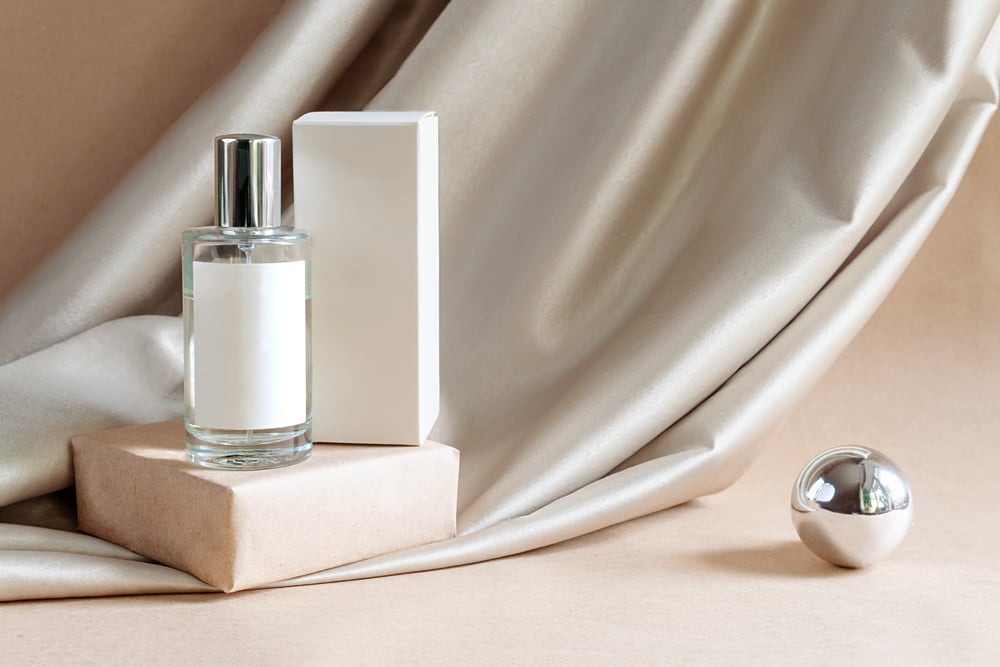10 Minimalist Design Ideas for Product Labels and Packaging
Effective packaging and labeling play a crucial role in capturing consumers’ attention and influencing their purchasing decisions. Amidst the sea of products vying for attention on store shelves and online platforms, minimalist design has emerged as a powerful approach to stand out and make a lasting impression.
Minimalist design, rooted in the principle of simplicity, embraces clean lines, uncluttered layouts, and essential elements. This offers a breath of fresh air in an increasingly chaotic visual landscape. Furthermore, these qualities not only resonate with contemporary aesthetics but also resonate with the values of many modern consumers seeking simplicity and authenticity.
The benefits of minimalist design extend beyond aesthetics. By eliminating superfluous elements, minimalist packaging and labels effectively communicate the essence of a product, ensuring that key messages are conveyed with clarity and impact. In a fast-paced world where consumers have limited time and attention, minimalist design allows brands to capture attention swiftly.
This article will break down what minimalist design is, its benefits, and some ideas to effectively leverage it. Find out how your brand can create impactful visual experiences through minimalist design principles in product packaging and labels.
What is Minimalist Design?
Minimalist design is an aesthetic approach that revolves around simplicity, functionality, and clarity. It is characterized by clean lines, uncluttered layouts, and a focus on essential elements. At its core, minimalist design seeks to eliminate unnecessary complexity, stripping away any superfluous elements that may distract from the intended message or purpose.
Key Principles of Minimalist Design in Packaging and Labeling

- Simplicity: The essence of minimalist design lies in simplicity. It embraces the “less is more” philosophy, paring down design elements to their essential form. By reducing visual clutter, minimalist design creates a sense of visual calmness and elegance.
- Functionality: Minimalist design prioritizes functionality, ensuring that every design element serves a purpose. It eliminates decorative embellishments and focuses on the practical aspects of the design, emphasizing usability and ease of understanding.
- Clarity: Clear communication is vital. Minimalist design uses legible typography, concise messaging, and intuitive visual cues to convey information effectively. Clarity is achieved by creating visual hierarchy, guiding the viewer’s attention to the most important elements.
4 Benefits of Minimalist Design in Packaging and Labeling

1. Distinctive branding
Minimalist packaging and labels can create a distinctive brand identity. A clean and uncluttered design helps brands establish a visual language that sets them apart from competitors, making their products instantly recognizable.
2. Enhanced readability
Minimalist design prioritizes legibility, making product information and messaging easy to read and comprehend. Without unnecessary elements, minimalist packaging and labels allow consumers to quickly grasp essential details about the product.
3. Timeless Appeal
Minimalist design often has a timeless quality that transcends trends. Simple and classic design elements in packaging and labels can maintain relevance and appeal to consumers across different time periods.
4. Versatility
Minimalist design is versatile and adaptable to various product types and industries. Whether it’s food, beauty, technology, or fashion, minimalist packaging and labels can convey a sense of sophistication and elegance that resonates with a wide range of consumers.
5 Minimalist Packaging Design Ideas
When it comes to minimalist packaging design, certain strategies can help your brand achieve visually appealing and impactful results. Consider the following approaches to create compelling minimalist packaging:
1. Emphasize clean and uncluttered designs
Minimalist packaging thrives on simplicity, so it’s essential to focus on clean and uncluttered designs. Avoid overcrowding the packaging with excessive text, images, or decorative elements. Instead, carefully select and highlight the key elements that represent the essence of your product. Balance design elements and allow them to breathe.
2. Harness the power of negative space
Negative space, or white space, plays a significant role in minimalist packaging. By strategically incorporating negative space, you can create a sense of harmony, drawing attention to the essential elements. Use negative space to enhance the visual impact of your product, making it stand out amidst a sea of visually cluttered packaging.
3. Explore typography and font choice
Select fonts that are clean, legible, and align with your brand’s identity. Sans-serif fonts often work well in minimalist designs, as they convey a sense of modernity and simplicity. Experiment with font sizes and weights to create visual hierarchy and guide the viewer’s attention to key information. Remember to keep text minimal and concise.
4. Enhance with color palettes
Color choices significantly impact the overall look and feel of minimalist packaging. Opt for a limited color palette that complements your brand and product. Neutrals, such as white, black, and grayscale tones, are commonly used in minimalist design to express luxury and sophistication. Introduce one or two accent colors sparingly to add visual interest and create focal points. Consistency in color usage across your packaging and labels reinforces brand recognition.
5. Opt for sustainable materials
Consider incorporating sustainable materials into your minimalist packaging design. Minimalism aligns well with eco-consciousness, and using eco-friendly materials can enhance the appeal of your product. Explore options such as recycled paper, biodegradable plastics, or reusable packaging with your sustainable packaging manufacturer. Communicate your commitment to sustainability through minimalistic visual cues, such as icons or text, encouraging environmentally responsible consumption.
5 Minimalist Label Design Ideas
In addition to minimalist packaging, incorporating minimalist design techniques into product labels can further enhance the overall visual appeal and effectiveness of your branding. The following are some techniques you can explore:
1. Highlight clear and concise information
Minimalist label design prioritizes the communication of essential information in a concise and easily digestible manner. Streamline the content on your labels to include only the most vital details, such as the product name, key features, and any necessary regulatory information. Use a minimalist approach to typography and layout to ensure legibility and visual coherence.
2. Utilize minimal text with maximum impact
In line with the principles of minimalism, opt for minimal text on your labels. Embrace brevity and focus on conveying the core message succinctly. Utilize short, compelling phrases or taglines that capture the essence of your product. Consider using bullet points or numbering to present information in a concise and organized manner.
3. Embrace minimalist icons and symbols
Incorporating minimalist icons and symbols can enhance the visual appeal and convey information quickly and effectively. Use simplified icons that represent key product attributes or functionalities. These icons should be consistent with your brand’s visual identity and easily recognizable. Avoid cluttering the label with an excessive number of icons, ensuring that each one serves a clear purpose.
4. Practice consistent branding
Maintaining consistent branding across your labels is crucial for establishing a cohesive and recognizable identity. Use consistent typography, color schemes, and visual elements that align with your overall brand guidelines. Minimalist labels should reflect your brand’s values and personality, providing a cohesive experience for consumers.
5. Consider the label shape
The shape of your label can also contribute to the minimalist design. Opt for simple geometric shapes, such as circles or squares, that complement the overall packaging design. Alternatively, consider using a shape that aligns with your product theme. Keep in mind that the label shape should be practical and allow for easy application on various packaging materials.
Leverage Simplicity with Minimalist Design
In a world saturated with visually overwhelming product offerings, minimalist design stands out as a refreshing and impactful approach to packaging and label design. By embracing simplicity, functionality, and clarity, minimalist design captures the essence of your product while creating a visually striking impact.
Let simplicity be your guiding principle as you craft visually compelling experiences that showcase your brand’s identity and values. Elevate your products with minimalist design, and watch as they captivate the hearts and minds of consumers.
To learn more about designing minimalist packaging that resonates with your target audience, reach out to Meyers experts and discover how they can assist you in creating impactful custom packaging solutions.

